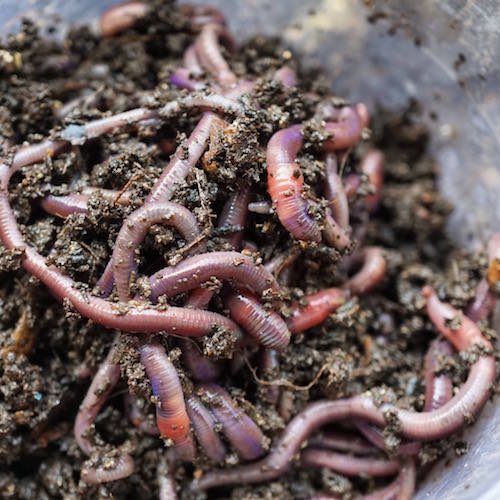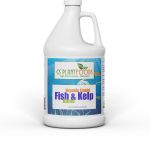Compost vs vermicompost: Compost is a mixture of organic materials that decompose naturally, while vermicompost is compost that is produced using worms. Composting is a popular method of recycling organic waste and creating nutrient-rich soil for gardening.
It involves piling up organic materials such as food scraps, yard waste, and leaves, and allowing them to decompose over time. This process can take several months to a year, depending on the conditions. Vermicomposting, on the other hand, utilizes special types of worms, such as red wrigglers or earthworms, to speed up the decomposition process.
The worms consume the organic waste and produce castings, which are highly beneficial for plant growth. Both compost and vermicompost provide excellent soil amendments, improving soil structure, fertility, and water retention. However, vermicompost tends to have higher nutrient concentrations and microbial activity due to the involvement of worms. Both methods have their advantages and are suitable for different gardening needs.

What Are Compost And Vermicompost?
Compost is a nutrient-rich material that is produced through the decomposition of organic matter. It is typically made from a mixture of kitchen waste, such as fruit and vegetable scraps, yard waste, and other organic materials like leaves and grass clippings. Composting is a natural process where microorganisms, such as bacteria and fungi, break down the organic matter, releasing nutrients that can be absorbed by plants.
Vermicompost, on the other hand, is a type of compost that is produced with the help of worms. Also known as worm castings, vermicompost is created by feeding organic waste to a specific type of worm called red wigglers. These worms consume the organic matter and produce nutrient-rich castings in the form of worm excrement. These castings are highly beneficial for plants due to their increased nutrient content and improved microbial activity.
How Compost And Vermicompost Are Made?
Making compost is a relatively simple process that involves layering organic materials and providing the right conditions for decomposition. The organic matter is piled up and occasionally turned or aerated to facilitate the breakdown process. Over time, the microorganisms present in the pile break down the organic matter into nutrient-rich compost.
Vermicompost, on the other hand, requires the addition of worms to aid in the decomposition process. A designated worm bin is used to house the worms and the organic waste. The worms consume the waste and convert it into nutrient-rich castings through their digestive processes. This process is often faster than traditional composting and produces a more concentrated and potent organic fertilizer.
Importance Of Compost And Vermicompost For Healthy Soil
Both compost and vermicompost play a crucial role in maintaining healthy soil and promoting plant growth. They improve soil structure, enhance water retention capabilities, and provide essential nutrients for plant uptake. These organic amendments also promote beneficial microbial activity in the soil, increasing nutrient availability and supporting overall soil health.
In addition, compost and vermicompost help reduce the need for synthetic fertilizers and chemicals in gardening and farming practices. By recycling organic waste and creating nutrient-rich amendments, they contribute to sustainable and environmentally friendly agriculture.
Key Differences Between Compost And Vermicompost
| Compost | Vermicompost |
|---|---|
| Produced through natural decomposition by microorganisms | Produced with the assistance of worms |
| Requires a compost pile or bin | Requires a designated worm bin |
| Takes longer to produce | Process is faster |
| Less nutrient-rich compared to vermicompost | Highly concentrated in nutrients |
| Can be used in a variety of applications, from gardening to large-scale farming | Mostly used for gardening and indoor plants |
What Is The Key Process of Composting And Its Benefits?
Composting is a natural and sustainable way to recycle organic waste into nutrient-rich soil amendments. It involves the decomposition of organic matter through the activity of microorganisms, resulting in the formation of compost. Compost is often compared to vermicompost, which is produced through the process of vermicomposting, involving the use of earthworms.
Steps Involved In The Composting Process
The composting process consists of several crucial steps:
- Collection: Start by collecting organic waste materials such as kitchen scraps, yard trimmings, and leaves.
- Shredding: To speed up the decomposition process, it is advisable to shred or chop the waste into smaller pieces.
- Layering: Alternate between green and brown materials, such as greens (food waste, grass clippings) and browns (dry leaves, wood chips), to create a well-balanced carbon-to-nitrogen ratio.
- Moisture management: Maintain an adequate level of moisture in the compost pile, similar to that of a damp sponge.
- Turning: Regularly turn the compost pile to ensure proper aeration and homogenous decomposition.
- Maturation: Allow the compost to mature for several months, during which it undergoes the final breakdown and stabilization.
- Screening: Finally, sift the compost to remove any remaining large particles, resulting in a fine, crumbly texture.

Benefits Of Using Compost For Soil Health
Compost acts as a natural soil conditioner, improving its fertility and overall health. Here are the key benefits of incorporating compost into your gardening practices:
- Nutrient enrichment: Compost is rich in essential nutrients, such as nitrogen, phosphorus, and potassium, which are vital for plant growth.
- Slow-release of nutrients: The nutrients in compost are slowly released, ensuring a steady supply of nourishment for plants over time.
- Microbial activity: Compost is teeming with beneficial microorganisms that enhance soil biology and facilitate nutrient cycling.
- Soil structure improvement: Compost improves soil structure, enhancing its ability to retain water and prevent erosion.
- Enhanced water retention: The organic matter in compost increases the soil’s water-holding capacity, reducing water runoff and promoting moisture availability to plants.
- Reduced environmental impact: By utilizing compost, you reduce the need for chemical fertilizers and divert organic waste from landfills, contributing to a more sustainable environment.
Nutrient Content And Release In Compost
Compost contains a balanced nutrient profile, providing a variety of macronutrients and micronutrients essential for plant growth. The nutrient content and release rate depend on several factors, including the feedstock used, the composting process, and the maturity of the compost.
The slow-release nature of compost ensures that nutrients are gradually released into the soil, minimizing the risk of nutrient leaching and maximizing plant uptake. This controlled nutrient release promotes long-term plant health and reduces the dependence on synthetic fertilizers.
Impact Of Compost On Soil Structure And Water Retention
Compost significantly improves soil structure, leading to a range of benefits, including enhanced water retention. When incorporated into the soil, compost particles bind together, creating aggregates that improve soil porosity and aeration.
These aggregates create natural channels for water movement, allowing for better infiltration and reducing the risk of surface runoff. Additionally, the organic matter in compost acts like a sponge, holding moisture in the soil, thus reducing water loss through evaporation.
The improved soil structure and increased water retention capacity contribute to a healthy and resilient growing environment, promoting vigorous plant growth and reducing the need for irrigation.
How To Process Vermicompost? ( Benefits)
When it comes to enriching soil health, one cannot underestimate the power of composting. While traditional composting involves decomposing organic matter to create nutrient-rich fertilizer, vermicomposting takes it a step further. Vermicomposting is the process of using worms to break down organic waste, producing a highly fertile substance called vermicompost or worm castings. Not only is the vermicomposting process simple and effective, but the resulting vermicompost offers numerous benefits for soil health.
Steps Involved In Vermicomposting
Vermicomposting involves a few simple steps that transform organic waste into nutrient-rich vermicompost. These steps include:
- Set up a worm bin: Choose a suitable container, such as a plastic or wooden bin, and drill holes for aeration and drainage. Line the bottom with damp newspaper or cardboard.
- Add bedding: Fill the bin with bedding material like shredded newspaper, leaves, or straw. Moisten the bedding to create a damp environment for the worms.
- Introduce worms: Add red worms (Eisenia fetida) or another suitable worm species to the bin. Start with a handful of worms and gradually increase their numbers as they multiply.
- Add organic waste: Begin feeding the worms with kitchen scraps, vegetable and fruit peels, coffee grounds, and other organic matter. Avoid adding meat, dairy, oily substances, or anything that may attract pests.
- Maintain moisture and temperature: Ensure the bedding remains moist but not soggy. Keep the bin in a shaded area within the optimal temperature range of 15-26°C (59-78°F).
- Harvest the vermicompost: After a few months, the worms will have transformed the organic waste into rich, dark vermicompost. Separate the worms from the vermicompost by either using a sorting method or creating worm-free zones for them to migrate to.
Benefits Of Using Vermicompost For Soil Health
The utilization of vermicompost can significantly enhance soil health and promote sustainable agriculture. Some key benefits include:
- Improved nutrient availability: Vermicompost is packed with essential plant nutrients like nitrogen, phosphorus, potassium, and micronutrients. These nutrients are in a readily available form, offering plants quick access to the nourishment they need for optimal growth.
- Enhanced soil structure: The humus-like structure and stable aggregates in vermicompost improve soil porosity, aeration, and moisture retention. This leads to better root development and nutrient uptake by plants.
- Promotion of beneficial microbial activity: Vermicompost is teeming with beneficial microorganisms that aid in decomposing organic matter, suppressing harmful pathogens, and enhancing nutrient cycling. These microbes create a favorable soil environment, promoting healthier plant growth and disease resistance.
- Increased water-holding capacity: The sponge-like nature of vermicompost allows it to hold water, reducing moisture stress on plants during dry periods. This helps conserve water and improves drought tolerance in gardens and agricultural fields.
- Reduced reliance on synthetic fertilizers: Vermicompost provides a natural alternative to chemical fertilizers, reducing the need for synthetic inputs. This is not only beneficial for the environment but also promotes sustainable farming practices.
Nutrient Content And Release In Vermicompost
Vermicompost boasts a well-balanced nutrient profile, making it an excellent fertilizer for plants. The nutrient content in vermicompost may vary depending on the feedstock and the quality of composting.
Generally, vermicompost contains significant levels of nitrogen, phosphorus, potassium, and micronutrients like calcium, magnesium, and zinc. Unlike chemical fertilizers, vermicompost releases these nutrients gradually over time, providing a sustainable and long-lasting source of nourishment for plants.
| Aspect | Vermicompost |
|---|---|
| Soil Structure Enhancement | Improves soil aggregation, creating pore spaces for better water, air, and root penetration |
| Enhanced Soil Fertility | Increases soil fertility, promoting nutrient cycling and overall plant health |
| Beneficial Microorganisms | Diverse microorganisms aid in organic matter decomposition and suppression of harmful pathogens |
| Fertile, Biologically Active Soil Environment | The combined effect ensures a fertile, biologically active soil that nurtures healthy plant growth |
Comparison Of Nutrient Content In Compost And Vermicompost
Compost is created through the natural decomposition of organic materials, such as kitchen scraps, yard waste, and manure. It undergoes a process known as aerobic decomposition, which involves the breakdown of organic matter by bacteria, fungi, and other microorganisms. As a result, compost contains a wide range of macro and micronutrients necessary for plant growth.
Vermicompost, on the other hand, is produced by a specific type of worm called red wigglers or Eisenia fetida. These worms consume organic materials and excrete waste, known as castings, which form vermicompost.
As the worms break down the organic matter, they enrich it with beneficial microorganisms, enzymes, and plant growth hormones. The nutrient content of vermicompost is typically higher compared to regular compost because of the worm’s digestive process.
Here is a comparison of the nutrient content found in compost and vermicompost:
| Nutrient | Compost | Vermicompost |
|---|---|---|
| Nitrogen (N) | Low to medium levels | High levels |
| Phosphorus (P) | Medium to high levels | High levels |
| Potassium (K) | Low to medium levels | Medium to high levels |
| Calcium (Ca) | Medium levels | High levels |
| Magnesium (Mg) | Medium levels | High levels |
Which One Is More Beneficial For Specific Plants And Crops?
The choice between compost and vermicompost depends on the specific plants and crops you are growing. Generally, vermicompost is preferred for plants that require higher levels of nutrients, such as fruiting vegetables like tomatoes and peppers, or heavy-feeders like corn and squash. The increased nutrient content in vermicompost can help promote vigorous growth and higher yields.
Compost, on the other hand, is advantageous for plants that prefer a more balanced nutrient profile or for improving overall soil structure. It is often used as a soil amendment to enhance water retention, drainage, and microbial activity.
Plants like leafy greens, herbs, and root crops can benefit from the slow-release nutrients and improved soil structure provided by compost.
Applications And Best Practices
When it comes to improving soil health and enhancing plant growth, compost and vermicompost are two excellent options. Both are organic materials that provide essential nutrients and improve soil structure. However, knowing the best practices for using compost and vermicompost can help you get the most out of these valuable resources in gardening and agriculture.
Best Practices For Using Compost In Gardening And Agriculture
Compost is a mixture of organic materials, such as kitchen scraps, yard waste, and manure, that undergoes a decomposition process. It enriches the soil with nutrients, improves water retention, and enhances the growth of beneficial microorganisms. Here are some best practices for using compost:
- Ensure proper compost maturity: Compost must be fully decomposed before applying it to your soil. This ensures that it is free from pathogens and weed seeds. Mature compost typically has a dark, crumbly texture and an earthy smell.
- Apply compost in the correct amount: The general rule of thumb is to apply compost at a depth of 2-4 inches across your garden beds. For potted plants, mix compost with potting soil at a ratio of 1:3.
- Incorporate compost into the soil: To maximize its benefits, mix compost into the top 6-8 inches of soil. This allows the nutrients to reach the plant roots and improves overall soil fertility.
- Use compost as a mulch: Applying a layer of compost around your plants acts as a protective mulch. It helps retain moisture, suppresses weed growth, and adds nutrients to the soil over time.
- Monitor pH levels: Compost tends to have a slightly acidic pH. Regularly test your soil’s pH and adjust it accordingly by adding lime or sulfur if necessary.
- Rotate compost application: To avoid nutrient imbalances and ensure all areas of your garden benefit, rotate the application of compost among different parts of the garden each year.
Best Practices For Using Vermicompost In Gardening And Agriculture
Vermicompost, also known as worm castings, is created by feeding organic waste to earthworms. It is rich in beneficial microorganisms, plant nutrients, and growth hormones. To make the most of vermicompost, follow these best practices:
- Properly harvest vermicompost: Harvesting vermicompost involves separating the worms from the castings. Start by removing the top layer of bedding material and then gently collect the castings using a method like the “light harvesting” technique.
- Apply vermicompost as a top dressing: Spread a thin layer of vermicompost (around 1/4 inch) on top of the soil around your plants. This allows the nutrients to gradually release into the soil and promotes healthy root development.
- Use vermicompost in seed-starting mixes: Vermicompost’s fine texture and beneficial microorganisms make it an excellent ingredient for seed-starting mixes. Combine it with other seed-starting materials to improve germination rates and seedling growth.
- Brew vermicompost tea: Steep vermicompost in water to create a nutrient-rich tea. Use this liquid fertilizer as a foliar spray or soil drench to provide immediate nutrition to your plants.
- Store vermicompost properly: Keep vermicompost in a cool, dark, and moist environment to maintain its quality. Avoid exposing it to direct sunlight or extreme temperatures, as it can reduce the viability of its beneficial microorganisms.
Choosing The Right Option: Compost Or Vermicompost
Choosing between compost and vermicompost depends on your specific needs and resources. Compost is more readily available, relatively easy to produce on a larger scale, and suitable for general soil improvement.
On the other hand, vermicompost requires specialized equipment and is best suited for small-scale or indoor gardening due to its slower production rate. It provides a concentrated source of nutrients and beneficial microorganisms.

Credit: urbanwormcompany.com
Frequently Asked Questions For Compost Vs Vermicompost
What Is Compost And How Is It Made?
Compost is organic matter that has been decomposed through the process of composting. It is made by combining yard waste, such as leaves and grass clippings, with kitchen scraps, like vegetable peelings. This mixture is then left to decompose over time, creating nutrient-rich soil amendment.
What Is Vermicompost And How Is It Different From Compost?
Vermicompost is a type of compost that is made using earthworms. These worms help to break down organic matter more efficiently, resulting in a faster composting process. Vermicompost also tends to be richer in beneficial microorganisms and nutrients, making it a preferred choice for many gardeners.
Can I Use Compost And Vermicompost Interchangeably?
Yes, compost and vermicompost can be used interchangeably in most gardening and landscaping applications. Both provide essential nutrients to plants and improve the overall health of the soil. However, vermicompost may be more beneficial for certain plants or in situations where quicker results are desired.
Are There Any Drawbacks To Using Compost Or Vermicompost?
While both compost and vermicompost have numerous benefits, there are a few considerations to keep in mind. Overuse of compost can lead to nutrient imbalances or overfertilization. Vermicompost requires the proper care of the worm population, such as maintaining optimal moisture and temperature levels.
Additionally, both types of compost may contain weed seeds or pathogens if not properly composted.
Conclusion
Both compost and vermicompost offer incredible benefits for enriching soil and promoting plant growth. While composting is a traditional method that involves breaking down organic matter, vermicomposting takes it a step further by incorporating the digestive power of earthworms. Whether you choose to utilize compost or vermicompost, you can ensure healthier gardens, reduced waste, and sustainable practices.
So, pick the method that suits your needs and get ready to transform your gardening game.

I am a graduate of Bangladesh Agricultural University, where I delved into various agricultural disciplines, equipping me with a profound understanding of agriculture. Beyond academics, I have hands-on experience in gardening and crop cultivation. My passion is to embrace sustainable farming and horticulture. With a BSc in Agriculture, I am dedicated to promoting environmentally conscious and efficient agrarian practices.
Bachelor of Science (BSc) in Agriculture (Hons.)
Master of Science. (Sustainable Agriculture & Food Security ) (MS)
Bangladesh Agricultural University




